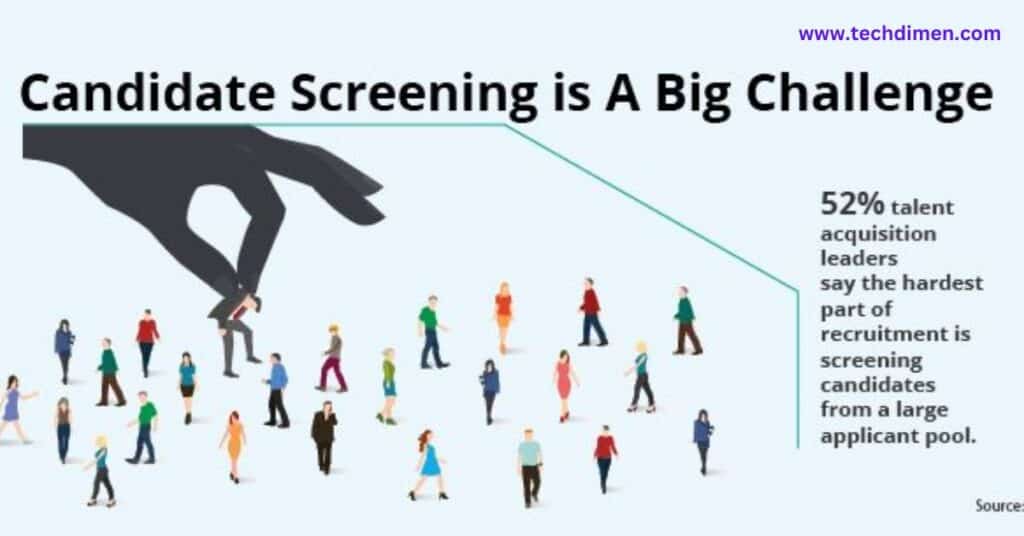In a fast moving digital landscape, companies can no longer afford silos between product strategy and technical execution. The Chief Product and Technology Officer (CPTO) has emerged as a strategic powerhouse, blending product and technology leadership into one unified force. This role isn’t just a merger of titles it’s a transformational shift in how modern businesses innovate, scale, and execute.
What Is a CPTO? The Strategic Hybrid Executive
A CPTO is a senior executive responsible for overseeing both the product vision and the technical execution of a company. While traditional organizations typically divide these functions between a Chief Product Officer (CPO) and a Chief Technology Officer (CTO), the CPTO bridges this gap by assuming responsibility for both. This unified leadership enables a more streamlined approach to innovation and delivery.
The CPTO owns the entire product lifecycle, defines and delivers the technical product roadmap, leads diverse teams across engineering, UX, and product functions, and ensures that the company’s solutions align with customer needs and scalable technologies. By doing so, the CPTO role ensures tight coordination between customer-centric goals and engineering output.
The Business Case for Hiring a CPTO

Companies that have embraced a unified product and tech strategy are achieving significant benefits. One of the main advantages is the ability to move faster in the market, avoiding the delays caused by departmental handoffs. When one leader is accountable for both vision and execution, responsibility becomes clearer and more focused. The CPTO also plays a vital role in encouraging innovation that responds directly to customer needs, while ensuring those solutions are technically feasible and scalable.
Kieran Flanagan, CMO at Zapier, summarized this perfectly, noting that the CPTO model enables tighter integration between business goals and technical delivery. With a single executive overseeing both aspects, teams stay aligned, objectives remain consistent, and delivery becomes more predictable.
CPTO vs CPO vs CTO: What’s the Difference?
The CPTO is fundamentally different from traditional roles like the CPO and CTO. The CPO typically focuses on product strategy, user experience, and understanding customer needs. The CTO is primarily concerned with technology leadership, infrastructure, and scalability. The CPTO combines these responsibilities, acting as both the strategic thinker and the execution leader.
In terms of organizational structure, the CPTO usually reports directly to the CEO and manages leaders in engineering, product, and UX. This arrangement streamlines communication and creates a direct link between company strategy and the teams that build and deliver the product.
Why Some Companies Choose to Combine the Roles
The decision to combine the CPO and CTO roles into a CPTO often comes from a need to eliminate the inefficiencies and misalignment that exist when product and engineering teams operate in isolation. This structure fosters a collaborative culture where everyone works toward shared objectives. Internal conflicts over priorities or conflicting roadmaps become less frequent because the CPTO is responsible for aligning all efforts.
Revolut, a well-known fintech company, provides a compelling case study. By appointing a CPTO, Revolut streamlined its product development process, achieving faster delivery timelines and reducing technical debt. This decision helped align their ambitious roadmap with the practical realities of engineering.
Shared Responsibilities: Where Product and Technology Overlap

Even in organizations where the roles are separate, there’s often overlap between product and technology leadership. A CPTO role formalizes this intersection. This executive drives customer-centric development, uses data to make informed decisions, validates product market fit, ensures engineering efficiency, and encourages modern practices like DevOps and agile methodologies.
This level of integration ensures that ideas are tested quickly, feedback loops are short, and the engineering team builds solutions that truly meet market needs.
CPTO Responsibilities: What Does a CPTO Do?
The CPTO’s responsibilities are broad and impactful. They set and articulate a clear product and technology vision that aligns with business goals. They develop a long term product roadmap with defined technical strategies to support growth. Managing diverse cross-functional teams is also part of the role, ensuring that departments collaborate rather than compete.
Process optimization is another priority. The CPTO fosters agile methodologies that enhance delivery speed and responsiveness. At the same time, they oversee technical debt, ensure the product is scalable, and keep pace with innovation. Coordination with go to market teams ensures that what is being built also aligns with launch strategies and revenue objectives. All of these efforts are measured against specific OKRs and KPIs to ensure progress is consistent and meaningful.
Skills Needed for a CPTO
To be successful, a CPTO must bring together deep technical knowledge with strong product instincts. Experience leading software development is essential, but so is a track record of launching innovative products. The CPTO must be a strategic visionary who can translate big picture thinking into detailed execution.
Interpersonal skills are critical because this role involves constant communication with stakeholders, customers, engineers, and marketers. Adaptability is key in fast-changing agile environments. Above all, a CPTO must be able to think like both a technologist and a customer advocate.
CPTO in SaaS and Tech Companies
In SaaS companies and other fast-scaling tech firms, the CPTO is often a cornerstone of growth. These businesses require constant innovation cycles and must keep product and engineering tightly aligned during hypergrowth.
The CPTO in SaaS ensures that new features are not just developed quickly but also meet user needs and perform reliably. This role is particularly essential when the company is following a product led growth strategy, where user experience drives acquisition and retention.
Organizational Structure and Reporting Lines

Structuring the CPTO role properly within an organization is vital for success. The CPTO should report directly to the CEO, and ideally oversee key functional leaders such as the Head of Engineering, Head of Product, and Head of UX or Design. This setup creates a collaborative executive team focused on delivering customer value.
The CPTO also works closely with other C-level executives such as the CMO, CRO, and COO, ensuring that product development aligns with marketing, revenue, and operational strategies.
When Should a Company Hire a CPTO?
A company should consider hiring a CPTO when it starts to experience friction between product and engineering teams or when the organization is transitioning from startup to scale-up phase. This usually occurs around Series B or beyond.
Other signs include having a solid product-market fit but struggling to scale, seeing misalignment in roadmap execution, or undergoing a digital transformation. A CPTO can provide the strategic alignment and execution capabilities needed to move the company forward.
Challenges Faced by CPTOs

Like any executive role, the CPTO comes with challenges. One of the biggest is balancing the priorities of product and engineering without compromising either. Making decisions that satisfy both customer needs and technical limitations can be difficult.
CPTOs also need to avoid becoming bottlenecks by trusting their teams and delegating effectively. Aligning internal stakeholders and managing cross-functional collaboration requires constant effort. As organizations grow, scaling teams while maintaining a coherent strategy can be complex.
KPIs for a Chief Product and Technology Officer
A CPTO’s performance should be measured through a mix of technical and product-oriented KPIs. Time to market indicates how efficiently the organization launches features. Adoption and engagement metrics show whether users find value in the product.
Engineering velocity and cycle time help track delivery efficiency. System uptime reflects technical reliability. Customer satisfaction metrics such as CSAT or NPS indicate product success. Team retention and engagement show the effectiveness of leadership.
These KPIs collectively highlight how the CPTO drives outcomes that matter to the business.
CPTO in Different Industries
The CPTO role is gaining traction across various industries. Fintech, balance regulatory compliance with user-friendly design. In they build platforms that handle high volumes while personalizing the customer journey.
health tech, ensure data security while providing intuitive experiences. I apps, they drive rapid iteration to retain users. In enterprise SaaS, manage complex integrations and develop robust feature sets. Each industry requires a tailored approach to product and tech leadership.
Future of CPTO Roles
As digital products become more complex and interdependent, the CPTO will become increasingly important. Many platform companies are shifting from dual leadership to unified CPTO models. More job listings are appearing for this hybrid role, and hiring practices are adapting to evaluate both technical and product fluency.
The CPTO is also taking a leading role in DevOps and data teams, integrating product development with analytics and operations. This evolution reflects the growing need for cross disciplinary leadership at the executive level.
CPTO Quick Reference Table
| Item | Details |
|---|---|
| Title | Chief Product and Technology Officer (CPTO) |
| Level | Executive (C-suite) |
| Reports To | CEO or COO |
| Leads | Product, Engineering, UX, Data, DevOps |
| Core Focus | Align product vision with tech execution |
| Key Skills | Strategy, tech expertise, leadership, innovation |
| Main Goals | Faster delivery, team alignment, user value |
| Industries | Tech, SaaS, Fintech, Startups |
| Success Metrics | Engagement, speed, quality, reliability |
FAQs
What does a Chief Product and Technology Officer do?
A CPTO is responsible for aligning the company’s product vision with its technical execution. They oversee product development, manage engineering teams, and drive innovation that supports business goals.
How is a CPTO different from a CTO or CPO
A CTO focuses on technology and infrastructure, while a CPO manages product strategy and user experience. A CPTO merges both roles, handling product innovation and technical delivery under a unified vision.
When should a company hire a CPTO?
Typically, companies consider hiring a CPTO when product and tech efforts need tighter integration usually during scale-up phases or after Series A/B funding rounds.
What are the key responsibilities of a CPTO?
A CPTO defines product strategy, leads software development, prioritizes customer needs, manages technical architecture, and aligns cross functional teams.
What industries benefit most from a CPTO role?
Industries like SaaS, fintech, health tech, and consumer apps benefit significantly from CPTOs due to their need for rapid innovation and seamless tech product collaboration.
Who reports to a CPTO?
Typically, product managers, software engineers, UX designers, data teams, and DevOps may report to the CPTO, depending on the organizational structure.
What skills make a great CPTO?
Strong leadership, product strategy experience, deep technical knowledge, systems thinking, business acumen, and customer empathy are essential skills for a successful CPTO.
Should a CPTO report to the CEO or COO?
It depends on the company. In product-led organizations, CPTOs often report directly to the CEO. In operations-heavy companies, they may report to the COO.
Can a startup benefit from a CPTO early on?
Yes. A CPTO in an early stage startup can help streamline innovation and execution, avoid silos, and build scalable tech product strategies from day one.
How does a CPTO improve time to market?
By unifying product and engineering under one leader, decisions are faster, priorities are aligned, and feedback loops are tighter resulting in quicker product delivery.
What metrics should a CPTO be accountable for?
Key metrics include product adoption, user engagement, release velocity, system stability, customer satisfaction, and team performance across product and tech.
What is the future of the CPTO role?
The CPTO role is becoming more popular as companies shift toward agile, product led growth models where fast innovation and tech alignment are critical to success.
Conclusion
The Chief Product and Technology Officer is not just a trendy title. It represents a new approach to executive leadership, one that aligns innovation, delivery, and customer value under a single vision. From setting strategy to managing execution, the CPTO plays a crucial role in shaping the future of digital businesses.
In the years ahead, the CPTO will likely become a fixture in high growth companies not because it’s convenient, but because it’s necessary for delivering modern, scalable, and impactful products in a competitive marketplace.

Jhon AJS is a tech enthusiast and author at Tech Dimen, where he explores the latest trends in technology and TV dimensions. With a passion for simplifying complex topics, Jhon aims to make tech accessible and engaging for readers of all levels.







